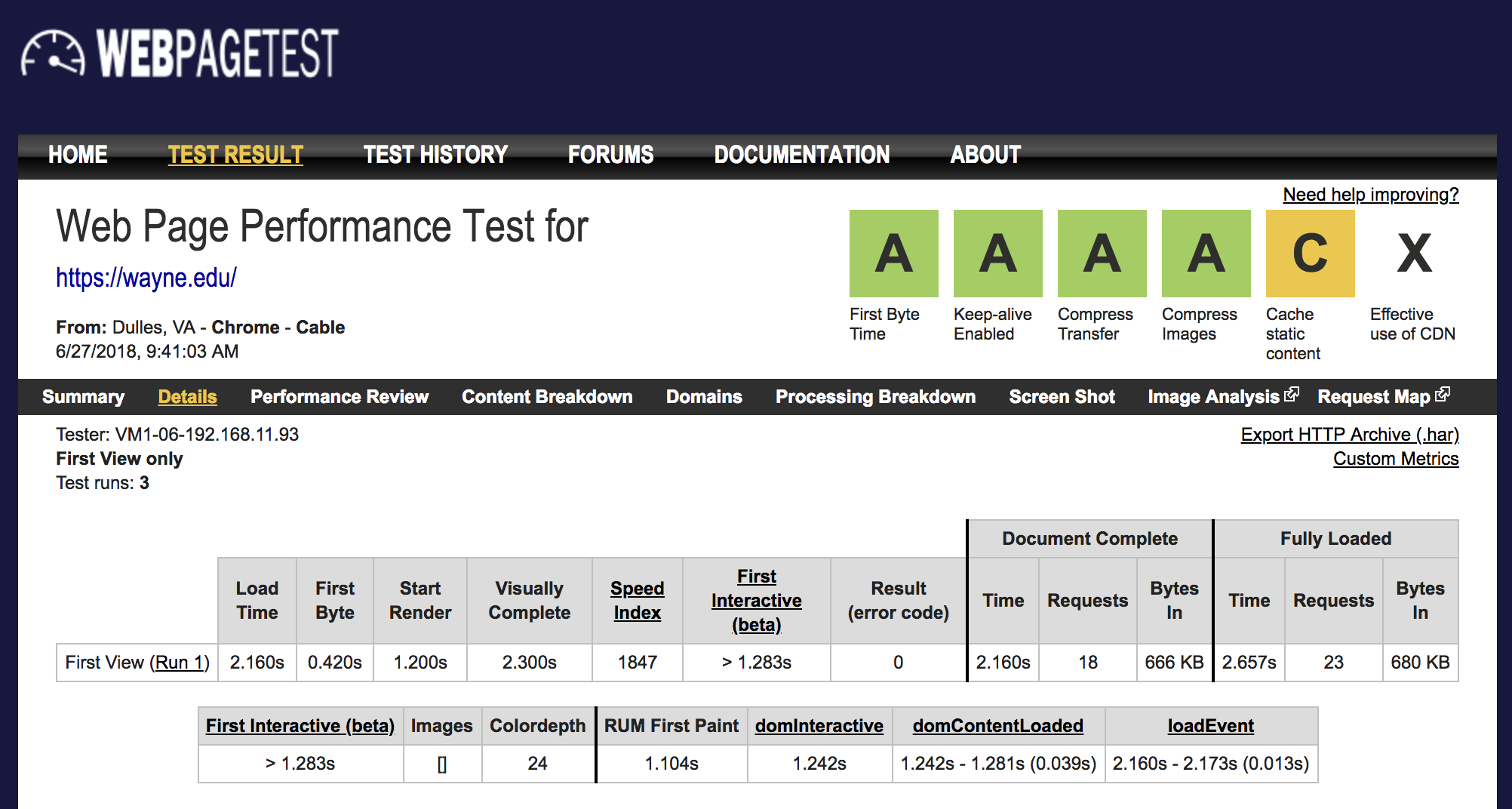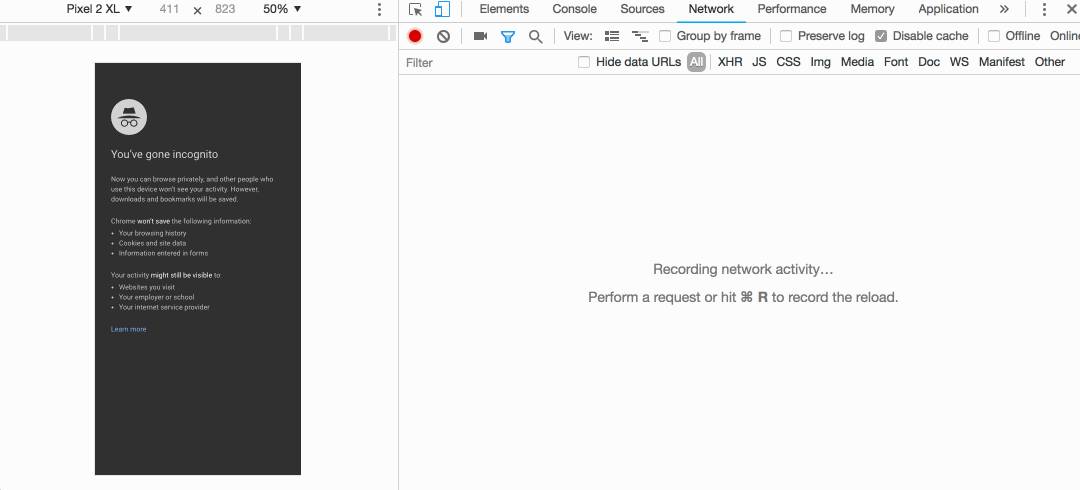The multiplying effect of shaving 600kb off wayne.edu ⚡️
We're always looking for things that have a multiplying effect.
# A little bit goes a long way
Wayne.edu (opens new window) is just one of those places. It gets ~700,000 page views per month so changes to the homepage impact a lot of people.
#  (opens new window)Only 25% of people scroll
(opens new window)Only 25% of people scroll
Internally and externally the homepage is used as a primary resource for the Login, Search or Top menu (in order of interaction).
Because of that, only 25% of people scroll past the initial fold.
Studies show a fast webpage gets more interaction (opens new window).
The bulk of the file size (and thus perceived speed) of wayne.edu (opens new window) is from images. Using the existing infrastructure, we already compress each image as far as possible. Taking the homepage down from historically ~3mb to ~1.1mb.
# Deferred loading of images
Using the technique that Rob implemented on Base (opens new window) to detect if an image is on or near the screen to trigger actually loading it, this was then transitioned to the CLAS website by Tom (opens new window) and wayne.edu proper by Jenny.
The result is a ~600kb reduction in initial page load on wayne.edu (opens new window), from ~1.1mb to ~600kb depending on the hero image.
# This change at scale
75% of 700,000 visits = 525,000 pageviews do not scroll 525,000 times 600kb savings = 315gb savings per month! 10.5gb savings per day.
The CLAS homepage had similar results for end users, but with fewer page views per day, the impact is not as visible.
Bandwidth costs can get expensive for our users. This change not only helps locally but globally, the impact is great (opens new window) without impacting the user experience.

